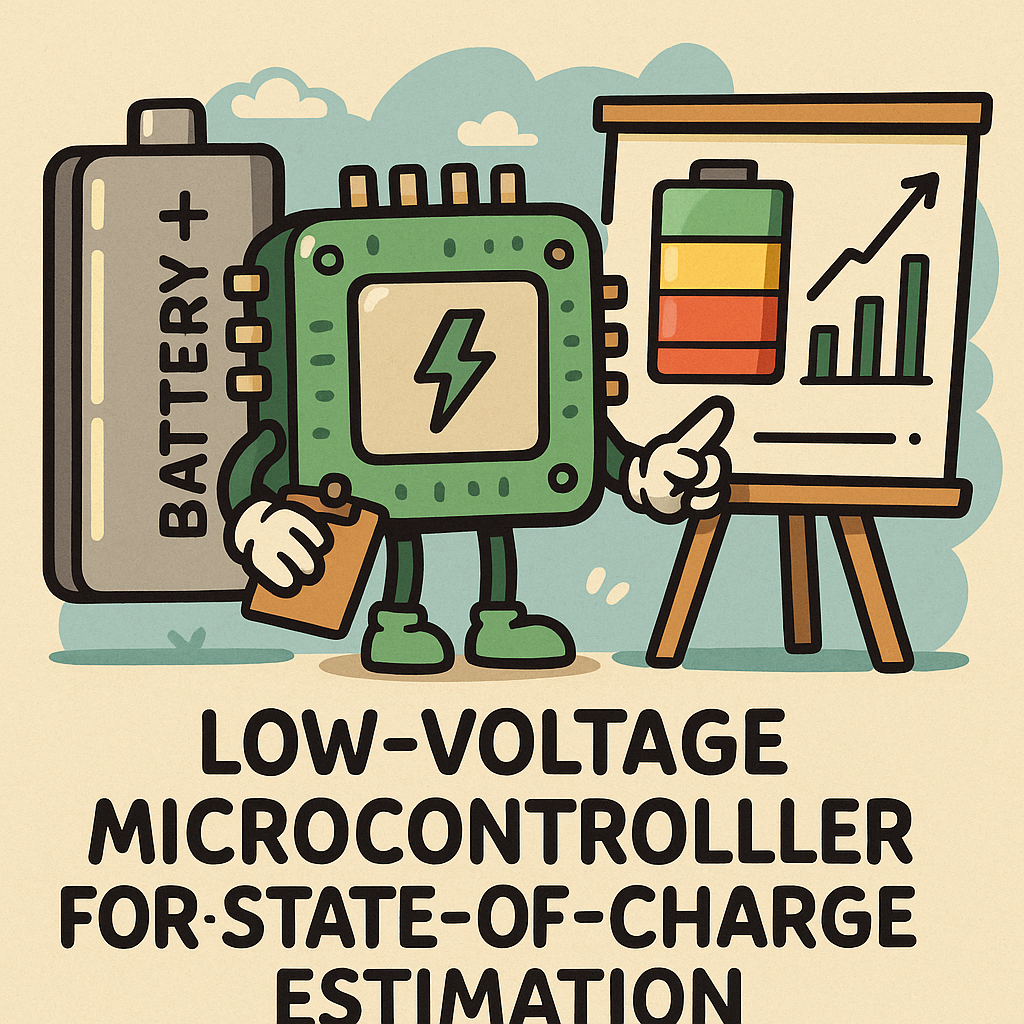Understanding Solid-State Battery Management Systems
As the demand for efficient energy storage solutions continues to rise, the focus on solid-state batteries has intensified. Unlike traditional lithium-ion batteries, solid-state batteries utilize a solid electrolyte, which offers improved safety and energy density. However, this innovation comes with its own set of challenges, particularly in accurately estimating the state of charge (SoC). This is where a low-voltage microcontroller designed for real-time SoC estimation becomes a pivotal component.
The Challenge of Accurate State-of-Charge Estimation
Estimating the state of charge in solid-state batteries is inherently complex. The electrochemical behavior of solid-state batteries can be nonlinear and highly sensitive to temperature, aging, and operational conditions. Traditional methods such as voltage-based estimation can lead to significant inaccuracies, particularly under load. To tackle this, we need a microcontroller that can integrate various inputs and execute complex algorithms in real time.
Microcontroller Selection and Hardware Design
Choosing the right microcontroller is critical. It must have low power consumption to enhance battery life and sufficient processing power to handle sophisticated algorithms. For instance, an ARM Cortex-M series microcontroller can be an excellent choice due to its balance of performance and energy efficiency. The design must also include:
- ADC Precision: A high-resolution Analog-to-Digital Converter (ADC) is essential for accurate voltage and current measurements.
- Communication Interfaces: Implementing I2C or SPI interfaces for communication with external sensors and battery management ICs is necessary for real-time data acquisition.
- Thermal Management: Since temperature affects battery performance, integrating temperature sensors into the design allows for real-time compensation in SoC algorithms.
Firmware Development and Algorithm Implementation
The firmware is where the magic happens. Implementing Kalman Filters or Extended Kalman Filters (EKF) allows for optimal state estimation by combining noisy measurements with system models. These algorithms require careful tuning to ensure that they react promptly to changes in battery state without introducing excessive latency. One must consider the trade-off between computational complexity and the speed of estimation. A well-optimized EKF can significantly enhance responsiveness, offering real-time insights into the battery’s SoC.
Real-World Design Tradeoffs
In practical applications, design trade-offs often emerge. For example, while increasing the ADC resolution improves measurement accuracy, it can also lead to higher power consumption and increased processing time. Similarly, using more sophisticated algorithms can yield better SoC estimation but may necessitate more resources, which can compromise the microcontroller’s low-power advantage. Each decision should be weighed against the operational requirements and constraints of the application.
Challenges of Integration and Testing
Integration of the microcontroller with other components in the solid-state battery management system poses additional challenges. Ensuring reliable data communication and processing under varying load conditions is crucial. Rigorous testing is required to validate the SoC estimation under different scenarios – from idle states to heavy load and temperature variations. Simulation environments can aid in identifying potential failure modes and refining algorithms before hardware implementation.
Why Design Decisions Matter
Every design decision has implications for the performance and reliability of the battery management system. For instance, the choice of a microcontroller impacts not only the computational capabilities but also the overall thermal performance of the system. A well-chosen microcontroller can minimize heat generation, which is vital in maintaining the integrity of solid-state batteries. Moreover, the algorithm’s ability to adapt to real-world conditions ensures that the battery operates within safe limits, thereby prolonging its lifespan and enhancing safety.
Future Trends and Innovations
Looking ahead, advancements in machine learning and AI could revolutionize SoC estimation. These technologies can provide adaptive algorithms that learn from historical data, optimizing their predictions over time. As microcontrollers become more capable, the integration of these advanced techniques may lead to even more accurate and efficient battery management systems, ensuring that solid-state batteries reach their full potential in various applications.



